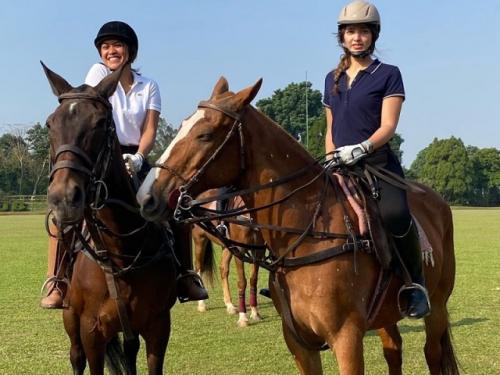Mastering Balance and Posture for Effective Riding
The Importance of Balance and Posture in Riding
Riding a horse is not just about sitting on its back and holding the reins. It requires a solid foundation of balance and posture to ensure a safe and effective ride. Understanding the fundamentals that shape your skills in these areas is crucial for any rider, whether you are a beginner or an experienced equestrian.
1. Balance: The Key to a Stable Ride
Balance is the foundation of riding. It allows you to maintain control over your body and the horse, enabling you to move with the horse’s motion rather than against it. Without proper balance, you may find yourself constantly struggling to stay in the saddle and unable to communicate effectively with your horse.
To achieve balance, it’s essential to have a strong core and a deep seat. Your core muscles help stabilize your body, while a deep seat allows you to feel connected to the horse’s movements. By engaging your core and sinking into the saddle, you create a solid base that allows you to move harmoniously with your horse.
Additionally, maintaining an even distribution of weight in the saddle is crucial for balance. Placing too much weight on one side can cause the horse to become unbalanced and may lead to issues such as leaning or falling off.
2. Posture: The Key to Effective Communication
Your posture plays a vital role in communicating with your horse. It affects how your aids are interpreted and how effectively you can give clear and precise cues. Good posture allows you to maintain a balanced position and effectively communicate your intentions to the horse.
When riding, it’s important to keep your shoulders back and relaxed, your chest open, and your head aligned with your spine. This alignment helps maintain a neutral pelvis, allowing for better communication through your seat and legs.
Proper posture also helps distribute your weight evenly on both seat bones, ensuring a balanced and comfortable position in the saddle. It allows you to maintain a light and independent seat, enabling you to follow the horse’s movements without interfering or causing discomfort.
3. Developing Balance and Posture: Practice Makes Perfect
Developing good balance and posture takes time and practice. It’s essential to start with a solid foundation and gradually build upon it. Regular lessons with a qualified instructor can provide guidance and feedback to help you improve your skills.
Exercises both on and off the horse can also help develop your balance and posture. Yoga, Pilates, and core-strengthening exercises can improve your overall stability and body awareness. These exercises focus on strengthening the core muscles and improving flexibility, both of which are crucial for maintaining balance and proper posture while riding.
When riding, practicing exercises such as posting trot, two-point position, and lateral movements can help improve your balance and posture. These exercises challenge your stability and encourage you to find your center of gravity while in motion.
Conclusion
Balance and posture are fundamental aspects of riding that shape your skills as an equestrian. They provide the foundation for effective communication with your horse and ensure a safe and enjoyable ride. By understanding the importance of balance and posture and dedicating time to develop these skills, you can enhance your riding abilities and create a harmonious partnership with your horse.

